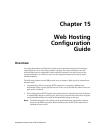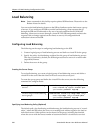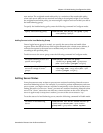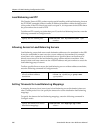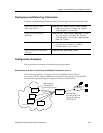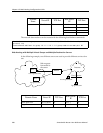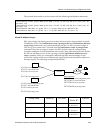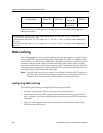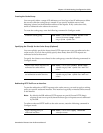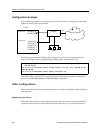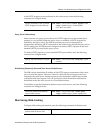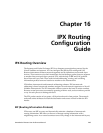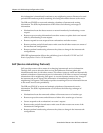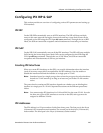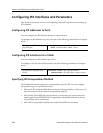
SmartSwitch Router User Reference Manual 241
Chapter 15: Web Hosting Configuration Guide
Creating the Cache Group
You can specify either a range of IP addresses or a list of up to four IP addresses to define
the servers when the cache group is created. If you specify multiple servers, load
balancing is based on the destination address of the request. If any cache server fails,
traffic is redirected to the other active servers.
To create the cache group, enter the following command in Configure mode:
Specifying the Client(s) for the Cache Group (Optional)
You can explicitly specify the hosts whose HTTP requests are or are not redirected to the
cache servers. If you do not explicitly specify these hosts, then all HTTP requests are
redirected to the cache servers.
To specify the clients or non-clients for the cache group, enter the following commands in
Configure mode:
Redirecting HTTP Traffic on an Interface
To start the redirection of HTTP requests to the cache servers, you need to apply a caching
policy to a specific outbound interface. This interface is typically an interface that connects
to the Internet.
Note: By default, the SSR redirects HTTP requests on port 80. Secure HTTP (https)
requests do not run on port 80, therefore these types of requests are not redirected
by the SSR.
To redirect outbound HTTP traffic to the cache servers, enter the following command in
Configure mode:
Create the cache group.
web-cache <cache-name> create server-list
<server-list-name> range <ipaddr-
range>
|list <ipaddr-list>
Define hosts whose requests are
redirected to cache servers.
web-cache <cache-name> permit hosts range
<ipaddr-range>|list <ipaddr-list>|acl <acl-
name>
Define hosts whose requests are
not redirected to cache servers.
web-cache <cache-name> deny hosts range
<ipaddr-range>|list <ipaddr-list>|acl <acl-
name>
Apply caching policy to
outbound interface.
web-cache <cache-name> apply interface
<interface-name>



